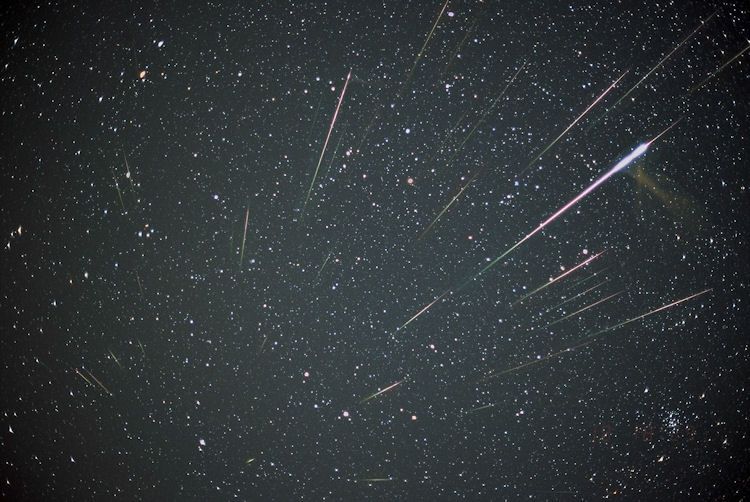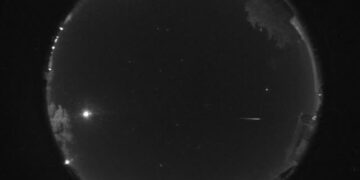Sky watchers, get ready! November is set to offer a spectacular celestial show with two meteor showers—the Northern Taurids and the Leonids—lighting up the night sky. This month brings a unique opportunity to witness these meteor showers in close succession, giving stargazers ample chances to spot shooting stars and maybe even catch a rare, brilliant fireball. But what makes these meteor showers so special, and why are they worth your attention?
Northern Taurids and Leonids: What You Need to Know
The Northern Taurids: A Show of Fireballs
The Northern Taurid meteor shower, already active since mid-October, will reach its peak in early November, around the 5th to the 12th. Known for their relatively slow-moving but bright meteors, the Taurids often deliver brilliant fireballs—large, glowing meteors that can be even more impressive than regular shooting stars. Originating from asteroid 2004 TG10, these meteors travel at a modest pace, creating longer and more lingering streaks across the sky, perfect for those who enjoy a slower-paced celestial show.

Experts predict that about eight to twelve meteors per hour could be visible during the peak nights, depending on the clarity of the sky and light pollution in your area. According to Space.com, this year’s viewing conditions will be favorable because the moon will set early in the night, leaving the sky darker for those late-night and early-morning viewing hours.
The Leonids: Fast, Bright, and Colorful
Following the Northern Taurids, the Leonid meteor shower will hit its peak from the night of November 17 into the early hours of November 18. The Leonids are known for their speed and brightness, as these meteors zip through the atmosphere at a staggering 44 miles per second. Often displaying hues of blue, white, aquamarine, and even green, Leonid meteors leave vibrant, colorful trails in their wake, creating a more dynamic viewing experience.

This image is a composition of 33 Leonids captured overnight from Nov. 18 to 19, 2001.
This year, however, the full moon on November 15 could wash out some of the fainter meteors, making it challenging to see the full potential of the Leonids. Still, with an expected rate of 10 to 15 meteors per hour from dark locations, there’s a good chance of catching some stunning shooting stars if you’re willing to stay up late or wake up early.
Best Times and Places to Watch
Both meteor showers will be visible from nearly any location, but for the best view, head to an area far from city lights or bright street lamps. Parks, rural areas, or open fields provide ideal spots for stargazing, as light pollution significantly reduces visibility.
For the Taurids, experts recommend starting your observation around midnight when the sky is darkest. The peak viewing window for the Leonids is slightly different, with the best chances during the pre-dawn hours on November 17 and 18. Even if you’re in a suburban area, try positioning yourself so that any lights are behind you, and let your eyes adjust to the darkness for at least 20 minutes.
Why These Meteor Showers Are So Special
Meteor showers are essentially streams of cosmic debris entering Earth’s atmosphere at high speeds. As this debris (usually small fragments from comets or asteroids) burns up, it creates a bright streak in the sky. Each meteor shower has a unique origin and characteristics, influenced by the parent body from which it originates.
- Northern Taurids: This meteor shower originates from asteroid 2004 TG10, which gives it distinct characteristics, such as slower speeds and brighter, longer-lasting fireballs. The Taurids’ fireballs are particularly exciting because they can appear larger and brighter than average meteors, creating an almost magical experience for those lucky enough to witness one.
- Leonids: Unlike the Taurids, the Leonids come from comet 55P/Temple-Tuttle. The comet’s high-speed debris results in meteors that are exceptionally fast and often colorful, adding a burst of excitement as they streak across the sky. Due to the comet’s orbit, the Leonids are known for periodic meteor storms, which occur roughly every 33 years, when hundreds of meteors can be seen per hour. While no storm is expected this year, the Leonids will still offer a beautiful display.
Understanding the Science Behind Meteor Showers
Meteor showers happen when Earth passes through the debris trails left by comets or asteroids. As these particles, ranging from tiny dust grains to larger pebbles, collide with Earth’s atmosphere, the friction causes them to heat up and glow. Each meteor shower we observe has its unique path, depending on the orbit of its parent body around the Sun.
In the case of the Northern Taurids, the parent body is an asteroid, meaning the meteors tend to be denser and create brighter, slower-moving fireballs. For the Leonids, the parent is a comet, with meteors that are less dense but incredibly fast. This distinction adds a layer of diversity to each shower, as viewers can see varying meteor characteristics and colors depending on the parent body.
Tips for the Best Viewing Experience
- Choose a Dark Location: Light pollution is the biggest enemy of meteor watching. Try to find a location far from city lights or head to a rural area where the sky is naturally darker.
- Check the Moon Phase: The moon’s brightness can hinder visibility, so plan to view during times when the moon is lower in the sky or setting. This year, the moon’s impact will be minimal during the Taurids but may interfere with the Leonids.
- Let Your Eyes Adjust: Give yourself at least 20 minutes to adjust to the dark. Avoid looking at bright lights, including your phone screen, as it can ruin your night vision.
- Use a Comfortable Setup: Bring a reclining chair or blanket to lie down and look up comfortably. Watching meteors requires patience, and being comfortable will make the experience more enjoyable.
- Stay Warm: November nights can be chilly, so dress in layers and bring blankets or a thermos of hot chocolate to stay warm.
Why You Shouldn’t Miss November’s Meteor Showers
Meteor showers are one of the simplest yet most awe-inspiring natural events you can witness. They require no special equipment, only a clear sky, and a bit of patience. These events offer a chance to connect with the cosmos, experiencing a small glimpse of the vast, dynamic universe we’re part of. For those with kids, it’s a fantastic opportunity to inspire curiosity about science and astronomy.
The Northern Taurids and Leonids provide a unique back-to-back opportunity to observe two different types of meteor showers. Whether you’re fascinated by the slower, majestic fireballs of the Taurids or the fast, colorful streaks of the Leonids, November’s night sky has something for everyone.
Conclusion: Don’t Miss November’s Celestial Double Feature
As we head into the cooler months, November’s meteor showers provide the perfect reason to bundle up and spend some time stargazing. With both the Northern Taurids and the Leonids peaking within two weeks of each other, you have a rare chance to experience two distinctive meteor showers in a short period. Make sure to mark your calendar, prepare your viewing spot, and keep an eye on the night sky. This November promises an unforgettable display that will remind us of the beauty and mystery of the universe.



















